Hyperpigmentation in Virginia, Washington D.C. and Maryland.
Embark on a journey of aesthetic excellence with The Naderi Center. Experience unparalleled artistry and precision for transformative beauty.
Hyperpigmentation Treatment Benefits
Revitalize your skin with the multiple benefits of Hyperpigmentation treatments. At the crossroads of technology and skincare, our cutting-edge solutions can turn the page on skin discoloration and dark spots. It’s more than just a procedure; it’s a gateway to renewed self-confidence and vibrant, even-toned skin.
Skin Clarity
Our Hyperpigmentation treatments help fade dark spots and discoloration, providing you with a clear, balanced complexion you'll love.
Youthful Appearance
Say farewell to premature aging signs. Our treatments actively rejuvenate your skin, giving you a youthful glow.
Confidence Boost
With improved skin tone and clarity, you'll face the world with newfound confidence, ready to take on any challenge.


What is Hyperpigmentation?
Hyperpigmentation is a common skin condition in which patches of the skin become darker in color than that of the surrounding skin. The dark patches occur when melanocytes, the pigment producing cells of the body, over-produce dark pigment (melanin). The overproduction of melanin causes uneven skin tone and blotchy pigmented spots on the skin. Hyperpigmentation can affect any skin type and color, regardless of age. Hyperpigmentation can affect any part of the body, but it tends to bother most people when it occurs on the face. Depending on your Fitzpatrick skin type, there are different treatment modalities available for different skin types.

Causes of Hyperpigmentation
Hyperpigmentation has both internal and external causes. Some of the most common factors are:
- UV Exposure
- Acne
- Hormonal imbalances
- Medical conditions
- Trauma to the skin
- Smoking
- Medications
- Trauma to the skin caused by hair removal techniques (laser, waxing, tweezing)
- Burns
- Aging
- Pregnancy
- Genetics
Diagnosis of Hyperpigmentation
Correct diagnosis of hyperpigmentation is essential when it comes to prescribing an effective treatment regiment. Both the type of hyperpigmentation as well as an individual’s skin type determine which treatments are most effective and more importantly some treatments can be dangerous when performed on darker skin shades.
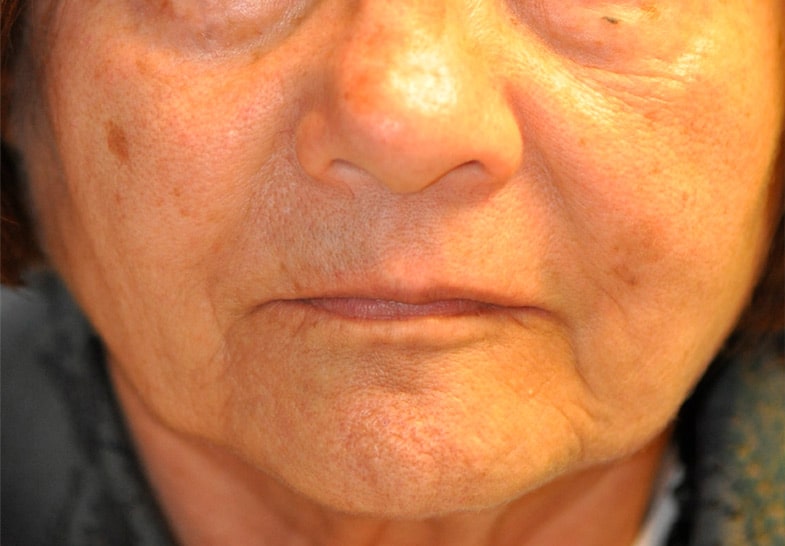
Age Spots (Liver Spots)
Lentigines, or “liver/age” spots are benign flat dark lesions that are associated with aging, typically seen in individuals 50 and older. Commonly found on the hands and face, these spots can occur on any skin surface that is routinely exposed to the sun. Age spots are also more commonly seen in individuals with lighter skin types. Age spots have an irregular shape and should be regularly monitored by a physician to assess whether there are any changes in thickness, pigment, and size.
Melasma
Melasma presents as blotchy, symmetric tan, brown or blue-gray patches typically found on the face. The hyperpigmentation can involve both the epidermal as well as dermal layers of the skin. Melasma is caused by a deregulation of the pathways that balances the appropriate amount of pigment production in the skin by melanocytes, as well as uneven pickup of pigment by the keratinocytes. Commonly seen in women of higher Fitzpatrick skin types (III-VI), melasma is caused by both external and internal factors. Internal causes of melasma include birth control pills, hormone supplementation, hormone imbalance, pregnancy and inflammatory disorders such as acne and rosacea. The main cause of external factor in melasma is the sun’s UV radiation exposure, however use of cosmetics and other products, medications, hot water (hot showers/baths) and continuous skin irritation from improper use of topical drugs.
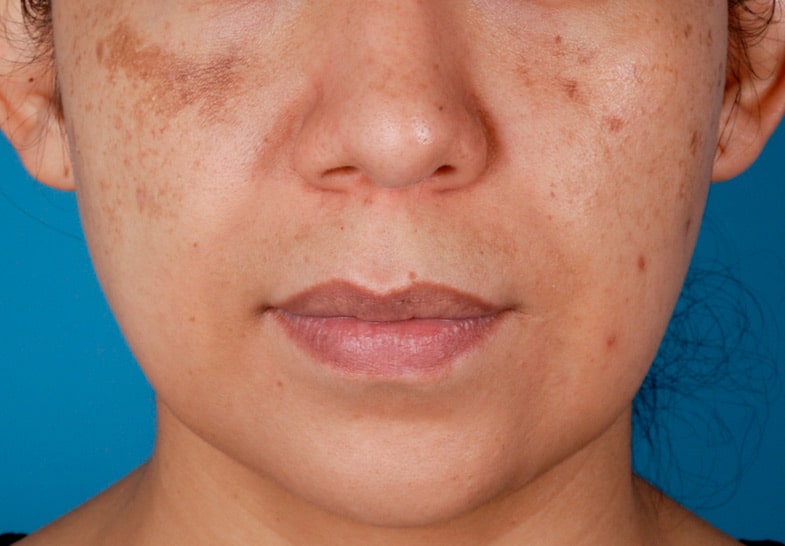
It is the hormonal influences that make melasma one of the more chronic, reoccurring, and stubborn forms of hyperpigmentation to treat. Any hormonal change in the body including pregnancy, stress, external hormone therapy, and oral contraceptive use can trigger the formation of melasma. In fact, melasma is often dubbed the “mask of pregnancy,” due to its common presentation in pregnant women.
Sun exposure is one of the culprits in the formation of melasma and explains why melasma gets darker in the summer months and improves in appearance in the winter months. However, simply staying out of the sun may not cure the melasma if there is an underlying hormonal imbalance issue that needs to be addressed. Preventative measures are just as important as initial elimination of melasma due to its high likelihood for reoccurrence. Topical skin lightening agents, chemical peels, and light therapy are effective in the treatment of melasma.

Post-Inflammatory Hyperpigmentation (PIH)
Post-inflammatory hyperpigmentation (PIH) can be induced by a number of causes, acne being one of the most common culprits. Most commonly seen in patients of non-Caucasian skin, including African Americans, Hispanics/Latinos, Pacific Islanders, Middle Eastern and Asian descent.
PIH is one of the most common reasons why patients of darker skin tones seek the help of a dermatologist. PIH can take weeks, months and even years to diminish if left untreated with the aid of a skin medical professional.
PIH can affect both the superficial layer of the skin, epidermis, as well as deeper skin layers, including the dermis. PIH appears as tan, brown, or dark brown when it affects the epidermis. The uneven brownish discoloration is caused by melanocytes, pigment producing skin cells, depositing melanin unevenly onto the epidermal keratinocytes (skin cells). When the pigmentation is a blue-gray color, this is a result of excess melanin traveling to the deeper layers of the epidermis. Inflammatory cells in the dermis called macrophages, take up melanin that has been deposited within the deeper epidermal layers. It is the melanin degrading macrophages that are responsible for producing a blue-gray discoloration on the skins surface.
By simply examining the skin closely, you can help determine the depth of involvement of PIH as well as gauge what the best course of treatment would involve. A special light using a Wood’s lamp can be used to see if pigmentation darkens with light, in which case, it is more likely to be epidermal. If the pigmentation with a Wood’s lamp does not change in appearance, the pigment is deeper in the skin and more likely to involve the dermis. You can also stretch out the skin where there is hyperpigmentation and see if the color becomes lighter with stretching. Discoloration that fades with this light topical pressure is more epidermal; versus discoloration that does not change with pressure most likely involves the dermis. Regardless of the depth of PIH involvement, treatment will involve lasers, medical grade skincare products, or chemical peels, as well as reducing sun exposure.
Freckles
Freckles or ephelides, are light brown or red spots that are a result of routine UV exposure and are more commonly found in patients of lighter Fitzpatrick skin types and red or blonde hair. Freckles typically start to appear on the skin as early as one year of age. Individuals with freckles will notice that during the summer months their freckles darken in color and increase in number because sun exposure accelerates the rate of pigment production. If you do not like the appearance of your freckles, there are medical therapies for removing them; however further sun exposure will cause freckles to return. Although freckles are harmless, it is important to monitor their appearance and note any areas that have uneven pigmentation, raised boarders or are growing larger in size. Always seek a dermatologist’s evaluation if you are concerned about any skin lesion.
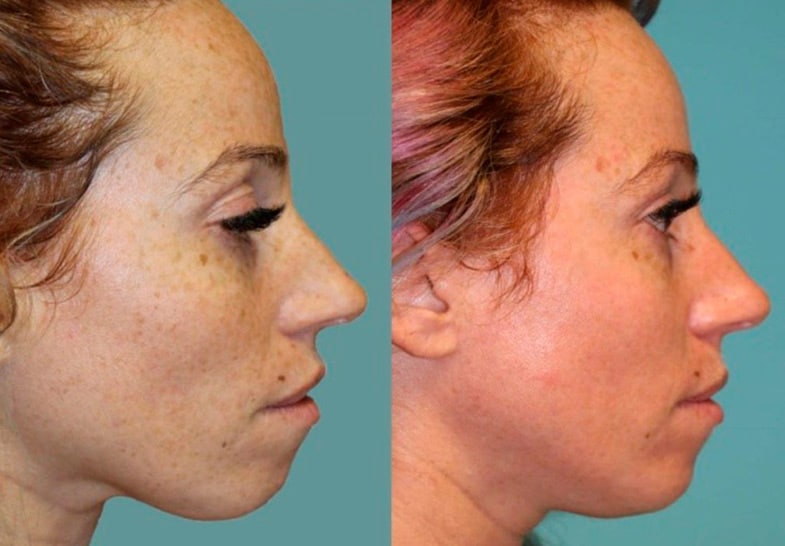

Tanning
Tanned skin simply stated is damaged skin. Whether tanning is from sun exposure or tanning beds, tanning causes the skin cells to age prematurely and puts one at risk for skin cancer. Scientific research estimates that women who tan in their 20s, are six times more likely to get melanoma than those that have no history of tanning. Although a tan may initially appear that an individual has a “healthy glow,” the reality is that UVA and UVB ray exposure leads to formation of age spots and wrinkles. There is also a misconception that getting a “base tan” before going on vacation may offer some level of protection from potential sunburn. The truth is that a base tan offers very little protection from sunburns. A base tan at best is estimated to be about as protective against the sun as a SPF level of 3. Additionally, tanning has been shown to be addictive, like smoking. UV light causes the release of special endorphins, which are hormones that make one “feel-good.”
Many seek this “feel-good” effect repeatedly, and in the process are predisposing themselves to harmful UV radiation. So do not be fooled, there is nothing healthy about tanned skin.
UVA radiation vs. UVB radiation
Preventing Hyperpigmentation
Top 4 ways to preventing hyperpigmentation
#1 Sun Protection
In order to decrease skin damage from the sun’s UV rays, minimize sun exposure, especially in the peak sunlight hours of 10 AM – 4 PM. When out in the sun, wear wide brim hats, polarized sunglasses, and most importantly a sunscreen with an SPF of at least 30.
SPF
Sun Protection Factor (SPF) is a means for estimating the amount of time you can spend in the sun before getting sunburn. If you typically burn after 10 minutes of sun exposure, a product with an SPF of 30 would mean that it would take approximately 30 times that length of time, or 300 minutes (5 hours) to get sunburned. Ideally you want to use sunscreen that has an SPF of 30-50 and has broad spectrum (UVA and UVB) protection. Remember even the best sunscreens typically work for no longer than 90 minutes and will need to be reapplied.
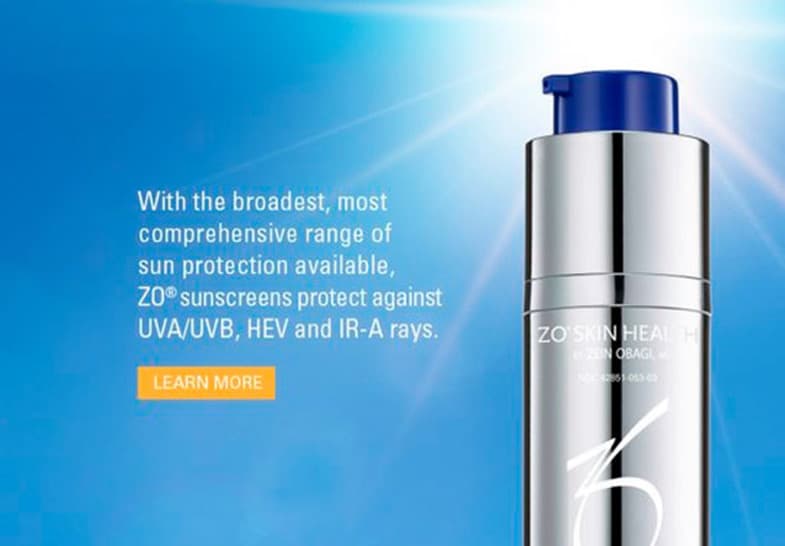
Does combining SPF products give me more sun protection?
It is not recommend to combine skincare products, especially when they are to be used to protect the skin from sun damage. Combining two SPF containing products will dilute the products and at best achieve an SPF that is somewhere between the two values. It is also possible that when you combine chemicals, you can inactivate important ingredients or cause the formation of unsafe compounds for the skin.

#2 Antioxidants Eat Them and Apply Them Topically
Antioxidants are critical when it comes to repairing damaged skin as well as protecting the skin from future damage. Eating a healthy diet full of colorful fruits and vegetables is key in supporting healthy skin with needed minerals and vitamins. However, no matter how good of a diet you eat, your skin can still benefit from additional Vitamins A, C, and E. Vitamins A, C, and E are powerful ingredients in repairing the skin’s damaged DNA and preventing future damage. Although, many over the counter skincare products, even expensive ones purchased at high-end department stores, often time do not have the active formulation of antioxidants that actually penetrate the skin. At The Naderi Center, we only carry medical grade skincare products that have been clinically as well as scientifically proven to be effective in penetrating the skin barrier to successfully heal skin.
#3 Do Not Pick at Your Skin
One of the most basic tips to prevent hyperpigmentation and blemishes is to avoid picking at your skin. Allow acne and other scars to heal on their own and use proper medical grade skincare products to prevent acne breakouts.
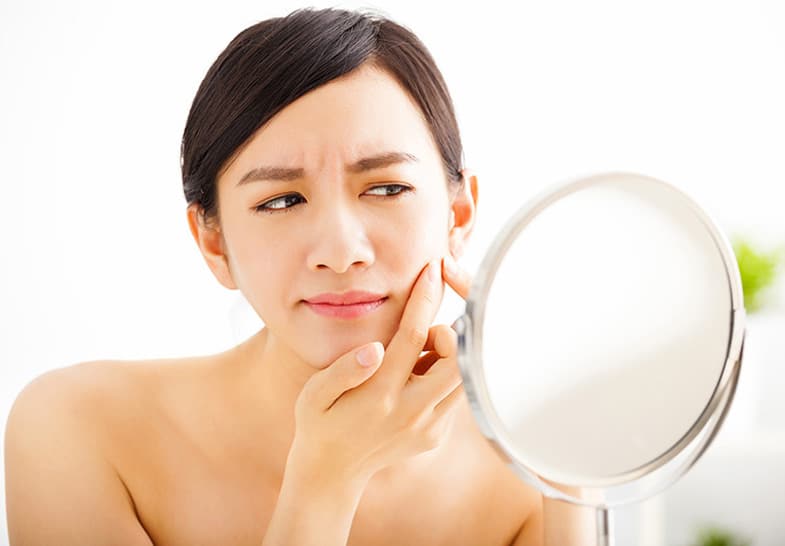
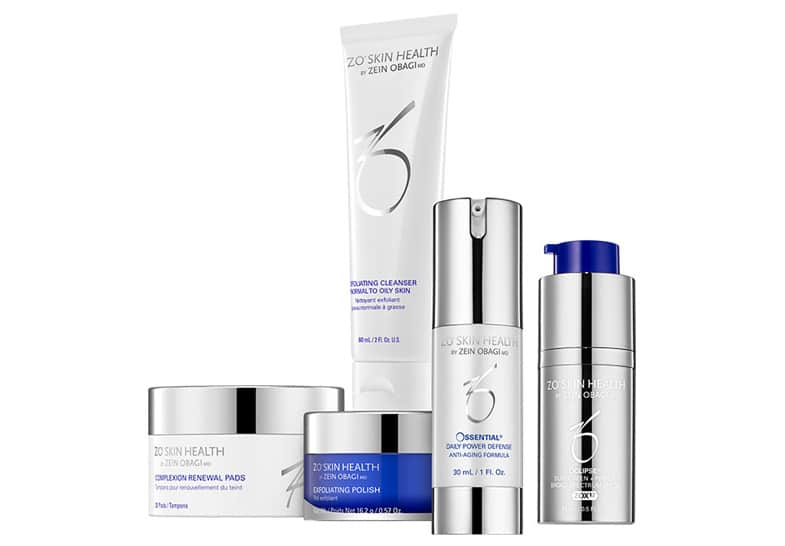
#4 Use Medical Grade Skincare Products
Unfortunately, because the FDA does not regulate the cosmeceutical industry, most over the counter (OTC) skincare products are ineffective at providing ingredients that will help reduce the appearance of hyperpigmentation. In fact, most OTC skincare products do not do regular testing of their products from manufacturing to distribution in order to ensure that the active ingredients have not changed in transport. Additionally, these same OTC products will often times put formulations of antioxidants that are incapable of penetrating even the most outer layer of the skin, the epidermis, hence rendering them a complete waste of money. At The Naderi Center, we take pride in offering patients skincare lines that we trust. Our offered skincare lines work closely with major academic and research institutions to ensure that they are using the latest in scientific developments to formulate effective medical grade skincare products.
Treatment Options for Hyperpigmentation
When treating hyperpigmentation at The Naderi Center, our approach is multifactorial using both non-invasive as well as invasive techniques.
Multifactorial Guidelines for Treatment of Hyperpigmentation
- Decrease sebum activity
- Treat aggressively (when possible) – lasers
- Bleaching and blending
- Pre-condition skin prior to peels and lasers
- Consider exfoliation accelerators
- Improve skin barrier function
- Inhibit inflammation
The basic premise for hyperpigmentation treatment is to block the melanocytes, pigment producing cells, from making pigment or melanin. More specifically many therapeutic modalities are aimed at blocking an enzyme called Tyrosinase, which stimulates melanocytes to produce melanin and deposit it throughout the skin. Most skin brightening and bleaching agents have ingredients, which essentially inhibit tyrosinase. Depending on how aggressive a patient wants to be with their skincare regimen and how soon they want to see results, there are a variety of skin-lightening agents that can reduce and eliminate the appearance of hyperpigmentation.
Topical Skincare for Hyperpigmentation
Hydroquinone
Hydroquinone is one of the first line skin-bleaching agent that is available in both prescription strength (4% or higher) as well as over the counter at 2% concentrations. Hydroquinone works by temporarily stopping the production of melanin, thus, helping to erase signs of hyperpigmentation. It is also speculated that hydroquinone may be involved by degrading melanosomes (small capsules of melanin that are produced by melanocytes) as well as by destroying actual melanocytes. Hydroquinone is the strongest ingredient available to treat unwanted pigment in the skin. For higher efficacies, hydroquinone is commonly combined with other ingredients including tretinoins, steroids, antioxidants and mild acids to be applied topically. Hydroquinone may cause areas of the skin to be more sensitive to the sun, thus avoiding sun exposure and tanning is advised. Additionally, pigment in the skin helps protect one from harmful UV rays, thus, it is not recommended to use hydroquinone products for more than 4-6 months at a time as prolonged use can weaken the skin. A rare side effect that is seen with long term and high concentrations of hydroquinone use is called, Ochronosis. Ochronosis is a condition where the skin responds in the opposite intended manner to hydroquinone, overproducing melanin, and leading to aggravated hyperpigmentation.
Retinoids
Retinoids are basically compounds that are derived from Vitamin A and can be used alone or in combination with other topicals to treat hyperpigmentation. The most popular prescription strength retinoid is Retin-A™, or tretinoin. The retinoid class of topicals works in a variety of ways to causes skin brightening and lightening. This class of topicals causes melanocyte cell death, induces anti-inflammatory factors and modifies skin cell functions to treat hyperpigmentation. One can expect prescription strength retinoids to have an affect on hyperpigmentation over the course of 4-6 months when used alone. One should expect the anticipated reactions of redness, peeling, and some level of skin irritation when starting a tretinoin. Retinoids come in a variety of strengths and dosing is adjusted by your physician to optimize your outcome and minimize reactions. Sun exposure should be extremely minimal while on a tretinoin. There is one form of oral retinoid known as Isotretinoin, or Accutane™, which is extremely strong and should be taken under direct supervision of a physician.
Kojic Acid
Kojic acid is a compound that is extracted from the Koji fungus, found in Asia. Along with brightening properties, kojic acid also has antibacterial and anti fungal properties and has been used for many years in Japan to treat infections. Similar to hydroquinone, kojic acid works to prevent the formation of melanin and decrease discoloration on the skin. Kojic acid is not a pharmaceutical (no prescription needed), it is treated as a cosmeceutical, meaning that there is no FDA regulation of products containing this ingredient. There is no way of knowing whether skincare products containing kojic acid actually have the active form and whether it is formulated in such a fashion that it is effective for topical application and skin penetration. It is important to use kojic acid that comes from skincare lines that regularly perform quality and clinical studies on their products to ensure effectiveness of their ingredients.
Lactic Acid
Lactic acid is derived from milk. Lactic acid has been used as a skin brightening by Egyptians as far back as during Cleopatra times. Legend has it that Cleopatra would take milk baths to keep her skin looking healthy and youthful. Lactic acid works in two ways to brighten one’s complexion, as a gentle exfoliate and as a mild inhibitor of melanin production. Lactic acid also helps reduce the appearance of fine lines, fight acne, and promote the skin’s collagen production. Lactic acid is an ingredient found commonly in many cleansers, chemical peels, and creams.
Vitamin C
L-Ascorbic Acid (AA) or Vitamin C is an antioxidant that is found in citrus fruits, green leafy vegetables, and even broccoli. Vitamin C causes skin brightening by interacting with tyrosinase to decrease melanin synthesis. Vitamin C also has photo-protective and anti-inflammatory effects. Vitamin C is one of the most difficult antioxidants to deliver effectively in the skin because of its unstable nature. It is important to choose a skincare line where the effective formation of Vitamin C is provided to ensure that it can actually penetrates the skin’s epidermis. Ascorbyl-6-palmitrate and magnesium ascorbyl phosphate are the active ingredients you should be looking for on the back of your Vitamin C lotions.
Azelaic Acid
Azelaic Acid (AA) is an organic compound derived from wheat, rye, and barley that can be used in the effective treatment of hyperpigmentation. There are a number of mechanisms by which azelaic acid helps decrease skin pigmentation, including inhibiting the enzyme involved in melanin production, tyrosinase, as well as by destroying abnormal melanocytes. Azelaic acid is often used in combination therapy with other medical grade compounds to treat hyperpigmentation conditions such as PIH and melasma. As an added benefit azelaic acid is a medical grade treatment for rosacea, due to the compounds anti-inflammatory properties. In addition to hyperpigmentation, azelaic acid is used in patients with acne. Azelaic acid decreases production of keratin, a substance made by the skin that harbors the growth of acne causing bacteria, Propionibacterium acnes.
Arbutin
Arbutin is a compound extracted from a variety of different plants and shrubs, including blueberries and bearberries. Arbutin converts to its active component, hydroquinone, once it has entered the skin The slow conversion to hydroquinone makes arbutin less irritating than when directly applying hydroquinone, hence patients may be more tolerant to using arbutin for skin lightening therapy. Arbutin lightens the skin by inhibiting tyrosinase as well as slowing down melanosome (melanin capsule) maturation. Some clinical studies indicate that arbutin is more effective in the treatment of hyperpigmentation in lighter-skinned patients as opposed to dark-skinned patients.
Combination Topical Therapy
When it comes to treating hyperpigmentation most patients want to see results within a few weeks to months. Although single-ingredient topical compounds are effective, it is when we start to combine skin lightening ingredients that we can really accelerate the skin-lightening treatment. The most commonly prescribed medical grade combination therapy for hyperpigmentation is Hydroquinone 4% along with tretinoin. Patients on the hydroquinone-tretinoin protocols can expect to see results within 8-12 weeks of starting treatment. Combining topical products applied at home with chemical peels and laser treatments can boost treatment efficacy and results quickly. However, this also makes the skin more sensitive to skin irritation and redness for the first few weeks of therapy. Any treatment for hyperpigmentation must include a sunscreen product with a minimum of SPF 30 to provide protection from the sun when outdoors.
At The Naderi Center, our skincare specialists and doctors will work closely with you to help erase hyperpigmentation from your skin. Once we have achieved beautiful skin it will then be important to stay on a skincare regiment that will inhibit future return of hyperpigmentation. Sometimes even minimizing sun exposure may not be all that is needed to maintain your new healthy skin, a medical grade skincare protocol can insure you keep the results you achieve with our guidance.
Light and Laser Treatments for Hyperpigementation
BBL/IPL
The Naderi Center uses the latest and newest Broadband Light (BBL) technology, the Sciton JouleTM – BBL Corrective and Forever Young BBL protocols. Broadband Light therapy, also known as Intense Pulse Light (IPL) therapy, helps to treat unwanted pigment on the face and body. BBL is a non-invasive light therapy that targets excessive skin pigment using specific wavelengths of light. BBL, or IPL, is perfect for distinct, “age spot” type hyperpigmentation or freckles and can be used on most body parts. Best results are typically seen in 3-5 treatments depending on the extent of skin damage.
Downtime and cost per BBL treatment are minimal, making this a great in-office choice for the treatment of hyperpigmentation. Broadband Light can be used to treat the residual hyperpigmentation after a summer spent in the sun, or as an add-on to an aggressive at home skincare regimen. Having a strong medical grade at home skincare regimen improves laser results as well as helps to maintain your new healthy skin. Patients who undergo BBL treatments must not have tanned skin or currently be taking any photosensitizing medications. These treatments can be paired with light laser resurfacing peels to improve surface texture at the same time as improving pigment.
Laser Resurfacing: Erbium Resurfacing
Erbium Laser resurfacing can help eliminate skin hyper-pigmentation. Laser resurfacing with the Sciton® Contour TRL™Erbium-YAG laser can be done at three different depths superficial, medium, and deep.
The Nano laser peel is a very superficial peel that removes light epidermal hyperpigmentation and helps refresh the texture of the skin. The recovery time is typically three to five days.
The Micro laser peel is a medium depth peel, which targets the pigment and texture in the epidermis. The recovery time is about 1 week.
The fully ablative laser peel is a deep resurfacing laser peel. This peel penetrates and resurfaces the skin down to the dermis and removes unwanted pigment. It also helps with tightening and overall texture of the skin. Fully ablative laser peels are not recommended for darker-skinned patients as they can lead to worsening hyperpigmentation. The recovery time after a fully ablative laser peel is about 2 weeks. A physician expert in laser resurfacing should be the individual that performs deep laser peels in order to minimize risk from complications.
Laser Resurfacing: Erbium Resurfacing
CO2 laser resurfacing, similar to the erbium laser is a fully ablative laser resurfacing. Using water molecules as it’s target, CO2 resurfacing can help remove both unwanted pigment and also help to tighten the skin by encouraging collage production. CO2 laser resurfacing is better suited for lighter skinned patients and is often done in combination with other cosmetic surgical procedures to enhance their effects.
Chemical peels
Chemical peels can be performed at a variety of different strengths to help treat hyperpigmentation. All skin types can benefit from chemical peels, however, it is up to the medical provider to determine what compounds and strengths are appropriate for each skin type and skin condition. At The Naderi Center, we perform a variety of chemical peels including, VI Peels, TCA Peels and Phenol Peels.
Hyperpigmentation Video
Hyperpigmentation Specialists at The Naderi Center
Board Certified dermatologist, Dr. Alexandra Snodgrass, has years of experience treating hyperpigmentation on different skin types and textures. Dr. Snodgrass takes a multimodality approach when it comes to the treatment of unwanted skin pigmentation. Depending on the individual, treatment can include laser resurfacing, chemical peels, medical grade skincare and microneedling. During your consultation our cosmetic dermatologist will help you come up with a comprehensive plan that will address your skin concerns.
Known as a leader in cosmetic and plastic surgery procedures, The Naderi Center has been serving patients in the Virginia, Maryland, and Washington D.C. area for more than 10 years. The Naderi Center is known for being the source of physicians and surgeons that are specialized in their realm and scope of practice. Patient’s come to The Naderi Center when they want an expert on the procedure or condition they are trying to improve. Contact one of The Naderi Center’s two offices for more information, or to schedule your laser resurfacing consultation. A patient coordinator can be reached at our Reston, Virginia office at 703-481-0002 and at our Chevy Chase, Maryland office at 301-222-2020.
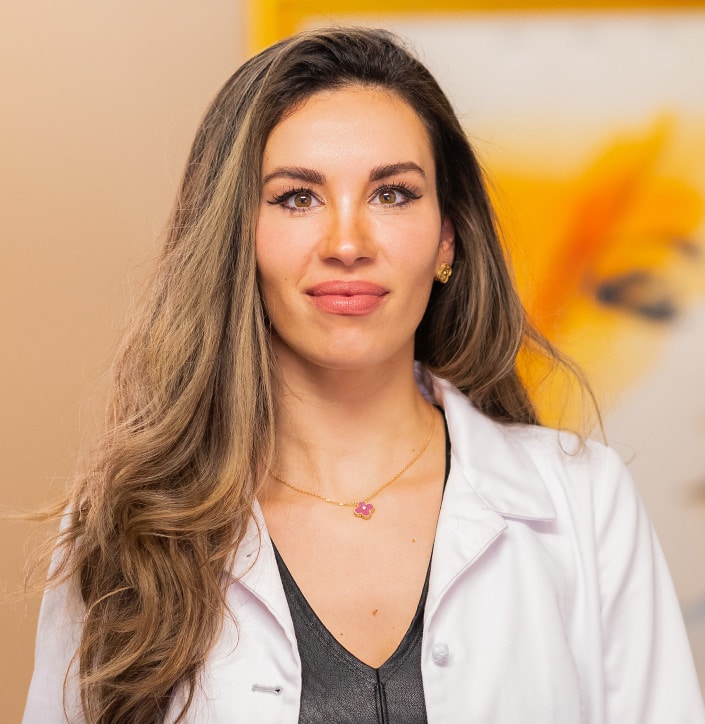
Hyperpigmentation FAQs
What causes hyperpigmentation?
Hyperpigmentation can be triggered by sun damage, hormonal imbalances (such as melasma), post-inflammatory responses (like acne scars), and certain medications that affect melanin production.
Can hyperpigmentation be permanently removed?
In many cases, hyperpigmentation can be significantly reduced or even eliminated with consistent treatment, but some forms may require ongoing maintenance to prevent recurrence.
What treatments are best for hyperpigmentation?
Common treatments include topical creams with ingredients like hydroquinone, retinoids, and vitamin C, as well as professional treatments like chemical peels, laser therapy, and microneedling.
Does sunscreen help with hyperpigmentation?
Yes, daily sunscreen use with at least SPF 30 is essential to prevent hyperpigmentation from worsening and to protect treated areas from further darkening.
Can the UltraClear 3D Miracle Laser help with hyperpigmentation?
Yes. The UltraClear® 3D Miracle Laser gently improves mild hyperpigmentation and uneven skin tone with minimal risk of PIH, making it a safe option for all skin tones.
What Hyperpigmentation Consultation office is near me?
If you live in the states of Virginia or Maryland, The Naderi Center for Plastic Surgery and Dermatology offers hyperpigmentation consultation among its services. For a full list of services, please visit our Locations page.